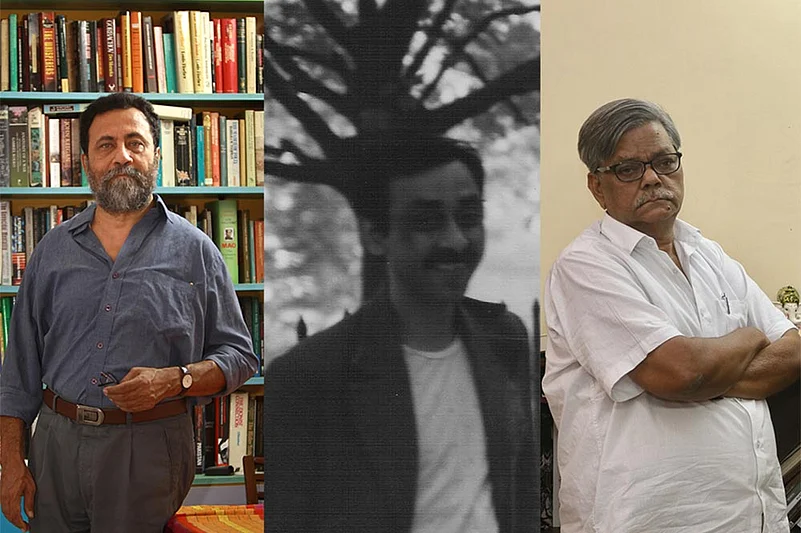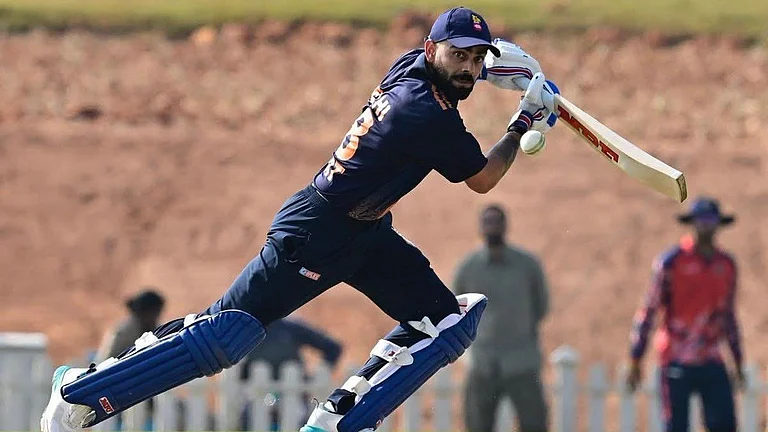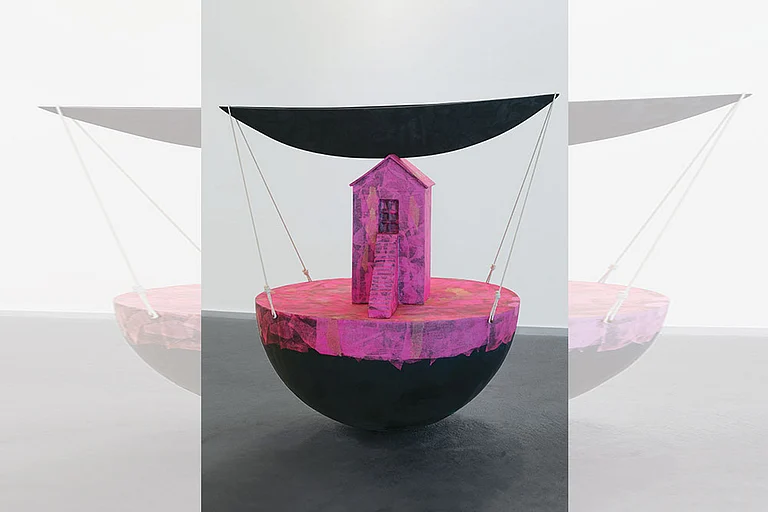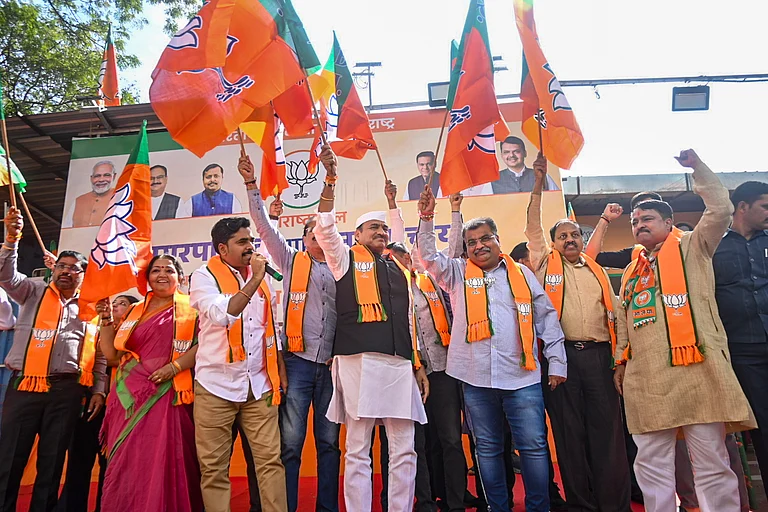In those heady days, everybody was somebody else. Rabindra Ray was ‘Baldev Yadav’. Ravinder Goel went around as ‘Rakesh’. Many others, such as Arvind Das, Achintya Barua, Ajit Pal and Devapriya Sen had taken on their own false names. Dilip Simeon had not one, but several. They went underground, posing as farm workers, schoolteachers, masons, rickshaw-pullers, tea sellers, daily-wage earners, truck drivers.... Some of them wore a beret and a wavy beard, like in the iconic Che Guevara photograph. But nothing should be too obvious to avoid arrest. The idea was to “merge with the population”. Their real job, however, was to spread the word about the need for a violent “revolution”, not to take up arms themselves.
The first wave of enthusiasm sped rapidly outward from Naxalbari, a rural enclave in Bengal and the epicentre of India’s Left radicalism. A violent peasant-landlord conflict took hold there between March and May, 1967. India had been independent for just two decades. From being the name of an unremarkable place, Naxalbari became the label for a still-raging battle that seeks a Communist overthrow of the Indian state.
“I was in north Bengal and also went to central Bihar,” says Rabindra Ray from Darjeeling, his voice fading in and out over a feeble mobile network. In the clearly audible portions, Ray sounds firm and fluent. “What did you do?” “Propaganda,” he says swiftly. Ray taught sociology at the Delhi School of Economics. Having retired four years ago, he now lives with his mother what must be a quiet life. He was part of a young urban group from Delhi who answered the call sounded in Naxalbari by Charu Majumdar, who broke away from the Communist Party of India (Marxist), along with ‘comrades’ Kanu Sanyal and Jangal Santhal. They were mostly students and teachers from Delhi University campuses, notably St Stephen’s College, who had quietly slipped out in search of the revolution.
The global backdrop was electrifying. The Viet Cong had mounted the successful Tet Offensive, a turning point in the Vietnam War. Chinese leader Mao Zedong’s influence was growing. East Europe was already a pinnacle of socialism.
The task of propagandists like Ray was to simply explain the ideological underpinnings of the Maoist movement. “We would talk directly, not couching my words. I would explain why a revolution was needed,” says Ray. The “undergrounds” had to work among the people to explain what this was.
The Maoists’ conceive India to be a semi-feudal society that oppresses the poor. The Naxalbari events were symptomatic of this ‘malady’. When Bimal Kisan, a tribal, secured a court order to plough the land he had been a tenant on, the landlord sent his henchmen to beat him up. That was the first spark.
The movement got its “traction”, Simeon says, from the brutality of the landed class. Charu Majumdar’s strategy was to build “peasants squads” that would “melt among the masses”. Bulk of Simeon’s friends from Delhi went to Bihar, although he himself headed to western UP’s Bijnor, working as a farmhand for a refugee Sikh landlord and also as a helper on a truck.
Today Simeon is, like Ray, critical of the movement. He had joined it, after graduating from St. Stephen’s, in 1969, two years after Naxalbari broke out. The flashpoint was the Bangladesh civil war that led to that country’s independence from Pakistan in 1971. It bobbed up as a “terrible political and moral crisis”. He doesn’t doubt the movement’s lofty ideals. “What was the movement after all? It was not one against poverty or so-called development so much as a movement against injustice. That’s why it was a vigilante movement.”
What then went wrong during the Bangladesh war? “On the one hand the ultra-Left faction which then ruled the People’s Republic of China was backing a violent revolution in India; but when it came to Pakistan, China supported the military regime of Yahya Khan right through the bloody suppression of the Bangladesh people,” Simeon says. “The Maoists were utterly confused.” The Chinese press wrote nothing about what was happening, he says.
Ray’s disillusionment appears philosophical. “The first reaction I got from my respondent when I raised the issue of equality is that the five fingers are never and cannot be equal.” He sounds as if he underwent a revolution in his own thinking at some point. There can be no society without hierarchy, he says. “Every individual wants the highest and best for himself.” (Modern economics call that rational choice.) “One has to state that equality as an idea is 300 years. It’s a load of rubbish. What is needed is kindness and empathy.”
Ray then makes a point that appears to be the crux. The Communists, he says, have never understood India. They just imported European ideas. In fact, even the Indian Constitution is a thoroughly western one. The problem of caste, for example, and the Left’s inability to deal with it (“the problem of theorising caste”, as the Communists would tend to frame it) has been widely debated within the Left.
Not correct, says Ravinder Goel, who teaches in Delhi University’s Satyawati College and himself a former underground. “The Communists did understand India. They did fight caste as an issue, but it was not so acute. All the Dalits were with the Communists in eastern UP, while the other backwards were with the socialists.” Goel says he is “no longer whole-timer”. “But my sympathies are there with the Naxalite or Marxist-Leninist movement, although I am a fringe element now.”
Goel says socialism can be achieved through non-violence. “There is nothing absolutist about a violent revolution.” However, violence may be necessary as the ruling classes will not allow and there will be resistance. That is the understanding.”
The Maoist movement rages on. Ray, Simeon and Goel don’t think it would sustain because Indian society is fundamentally changing. It wouldn’t die out either, says Goel.
“Ours was an ideological-political crisis. Charu Majumdar’s movement was not Marxism, but terrorism,” Goel says. “There was this problem of not working with the people, rather only a reliance on individual heroism, like the line of annihilation of class enemy.” Ray agrees. “It will not succeed, because only tribals are left with a sense of communal feeling. That will also die, because they’ll send their children to schools and will grow up to be very different.”
The bleak forbidding is a throwback to how the original leaders faded away. Majumdar died in police custody in 1972. Jangal Santhal died an alcoholic a decade later. Kanu Sanyal killed himself in his Siliguri home in 2010. Yet, when the Maoists launch deadly attacks, you know they are still around.


























